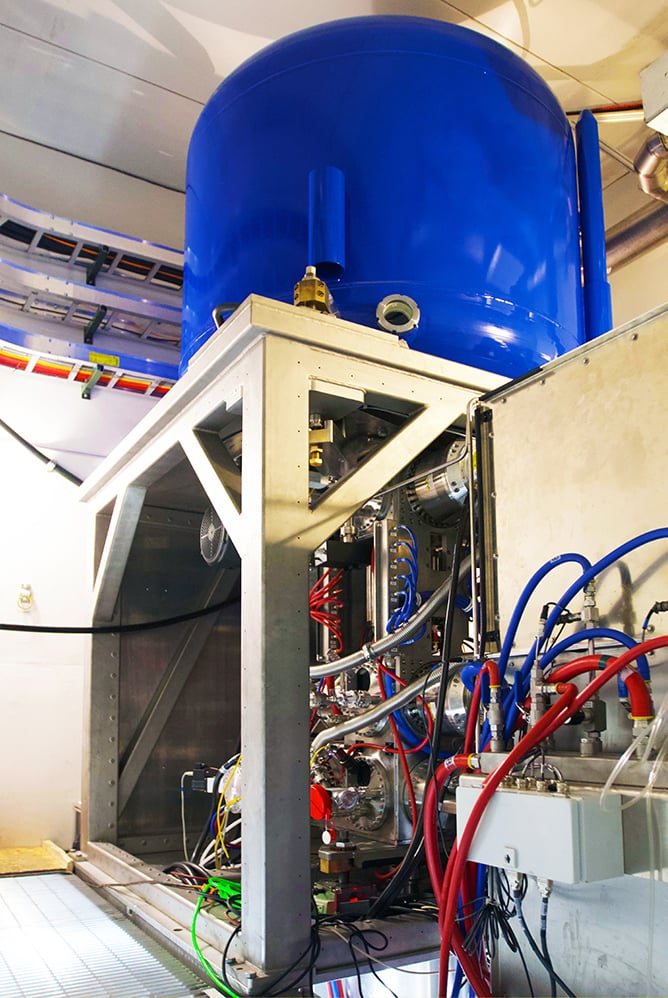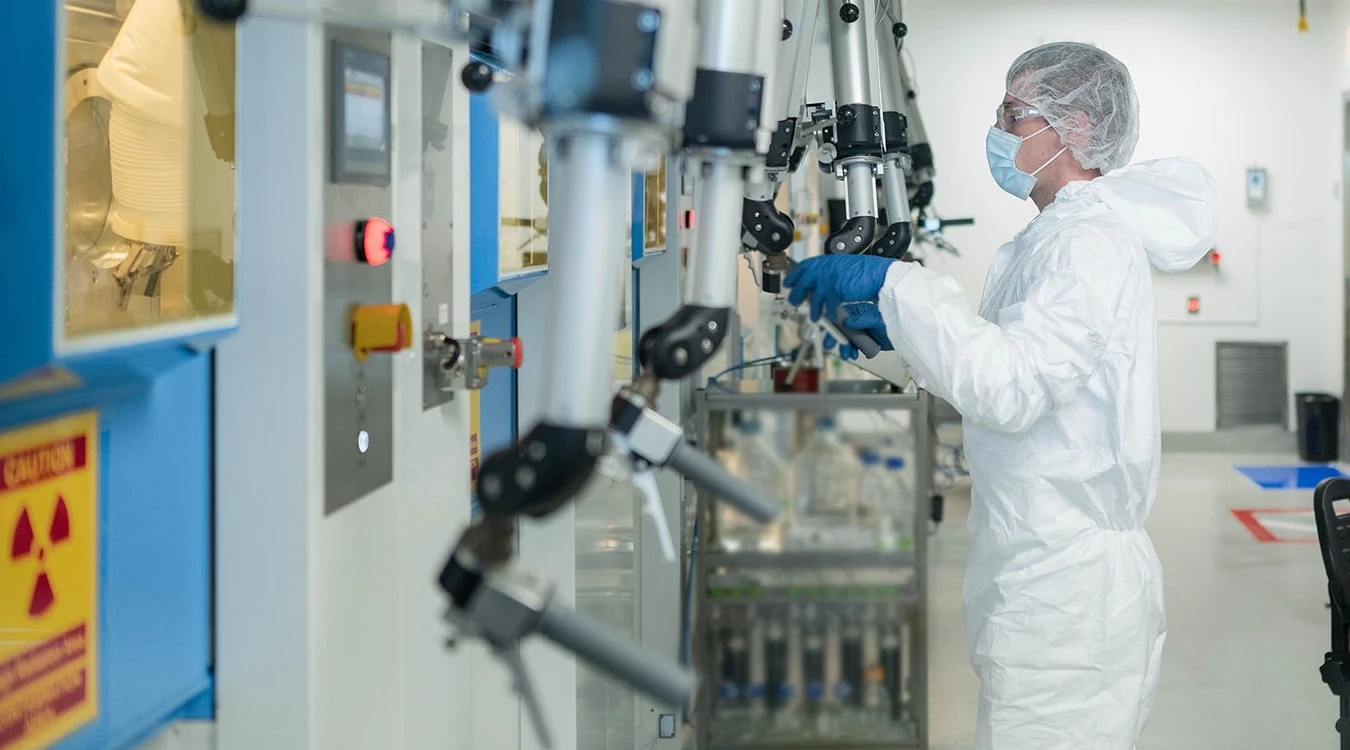
The American company SHINE Medical Technologies is building a factory for medical isotopes near Veendam in the Netherlands. “And we are in a hurry. The world is currently dependent on severely outdated nuclear reactors for making nuclear medicines,” says vice president of SHINE Medical Harrie Buurlage. By using a particle accelerator, radioactive substances needed for cancer detection and treatment, among other things, are going to be made at the new factory.

It is a first of its kind, the particle accelerator that SHINE Medical uses to make medical isotopes for cancer drugs, among other things. SHINE’s first factory is being built in America, and a second is set to follow in Veendam. Things should be ready to go in 2023. Construction of the factory in Veendam will start then. “And two years later, we want to be able to send the first medical isotopes into the world from Veendam,” says Buurlage. The company is investing around 200 million euros in the new factory in Veendam and is expected to employ around 200 people.
Veendam came to the fore as the best alternative from the search (which took at least a year and a half) to find the right place to build the new factory. “Veendam has the perfect combination of factors for the manufacturing plant,” Buurlage explains. “Medical isotopes have a limited shelf life, so the fact that Airport Eelde is a 20-minute drive away is ideal. Also, the location is right next to the N33 highway, so we do not need to drive through residential areas. What’s more, it is only around a 20-minute drive to the city of Groningen, which means that we can easily collaborate with the University of Groningen (RUG) and the University Medical Center Groningen for research projects.”
Outdated reactors
SHINE’s new method is coming at just the right time. After all, the healthcare sector currently relies on heavily outdated research reactors to produce nuclear medication. “Around the world, 50 million treatments that involve nuclear medication take place every year,” says Buurlage. “The drugs allow patients to live longer and also gives them a better quality of life. Yet hope for these people is currently hanging by a thread. I see one nuclear reactor after another crumble to their knees.” Over the past 10 years, a lot of European reactors have already been taken out of service, and often nuclear power plants are temporarily shut down because of a leak. And a new reactor is not just up and running in no time either: “You need 20 to 30 years before a new one can be used,” Buurlage explains.
The SHINE particle accelerator explained
Uranium forms the basic substance for the medical isotopes that are made in Veendam, the Netherlands. The uranium is irradiated with so-called neutrons inside the particle accelerator, which creates radioactive particles. These particles can then be used for medical purposes. With the technology that will be used in Veendam, it is possible to accelerate particles to 16 million kilometers per hour within a surface area of less than half a meter.
For a full description of the process, click here.
In addition to the fact that the new method with the particle accelerator can be deployed quickly, it also offers other advantages. “We are working with a technique that is much cleaner and safer. We use uranium for the production process, but we reuse the uranium so that the amount of waste is a lot less.” The production of isotopes by means of the particle accelerator requires a factor of one hundred fewer uranium fissions compared to production in a nuclear reactor.
More than medication
Consequently, the Veendam plant will focus on making isotopes, but SHINE Medical has even more ambitions on a global scale. Buurlage elaborates further. “It may seem a long way off now, but in 10 or 15 years’ time, we also want to use our particle accelerator to reduce the problem with radioactive waste. After all, our particle accelerator is also capable of doing that. We can eventually make long-life nuclear waste short-lived. So, this is how we want to expand our program.”
Competing with heavily subsidized reactors
In order for all of these plans to become reality, Buurlage still sees obstacles along the way that will have to be overcome. “We currently have to compete with reactors that are heavily subsidized by the government and we are, needless to say, fighting hard for a level playing field,” says Buurlage. He is hopeful. “I am having talks with ministers and holding negotiations at a European level. I very much hope that this innovative significance of this will be rewarded soon.”
Read other IO articles about Groningen here.



